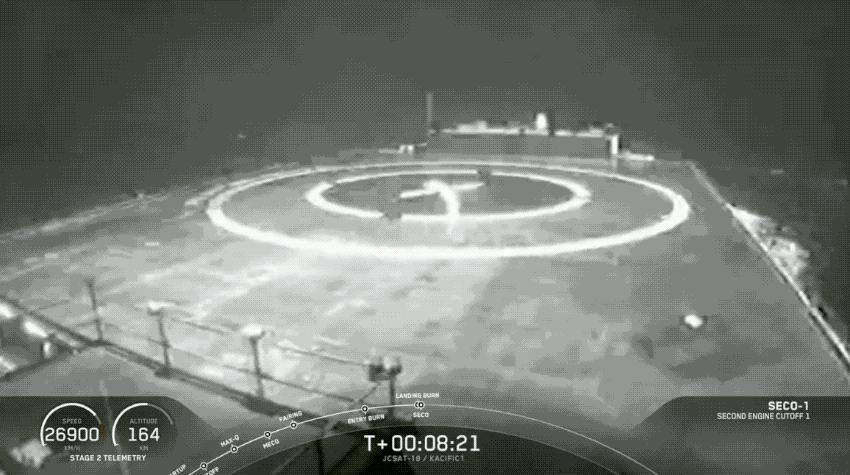SpaceX has successfully launched its 13th rocket this year, and its 11th Falcon 9 (the company also flew two Falcon Heavy missions in 2019). The launch included the re-use of a twice flown Falcon 9 booster stage, which it recovered again with a landing at sea aboard one of its droneship landing pads, and a recovery attempt of both halves of the nose cone fairing that protects the spacecraft’s cargo and that is shed before the upper stage reaches its target orbit.
This launch carried a Boeing-built satellite that was created to provide communications services for customers Kacific and SKY Perfect JSAT, and it seems to have delivered the payload to the target orbit as planned. But primary mission success is only half the story here – and the other half is key to SpaceX’s efforts to make even more of its launch system reusable over time.
Elon Musk’s rocket company has been recovering Falcon 9 (and more recently, Super Heavy) boosters since 2015 and has done 47 successful first stage recoveries in total, but its fairing catching system is a much more recent introduction. SpaceX first controlled the descent of, and recovered a fairing half in 2017 – but did so by dropping it into the ocean. It later began attempting to recover it using a barge recovery ship to keep from having to fish it out of the sea, and managed to do that successfully for the first time with one half of the two-part fairing used in a Falcon Heavy launch this past June.
The attempt to catch the fairings was not successful – SpaceX said on Twitter that both halves missed the waiting boats “narrowly,” but added that recovery teams will still seek to pull them from the ocean and see about re-using them on future missions. SpaceX re-flew a recovered fairing in November for the first time, and Musk has said previously that re-use of this part could save SpaceX as much as $6 million per mission, which is around 10% of the total cost of launch.
from TechCrunch https://ift.tt/35ufDq7




No comments:
Post a Comment